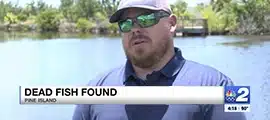People who look out for Florida’s single most essential treasure — not the sunshine, but our water — didn’t traditionally have to be masters of the good simile or navigators of the body politic.
But that’s changed.
“It’s like trying to take the cream out of the coffee. It’s a lot less expensive not to add the cream in the first place,” said Jim Moir, the Indian Riverkeeper based in Stuart, one of 15 member branches of the nonprofit Waterkeeper Alliance in Florida.
It’s a tidy simile. He was speaking about a turf grass industry in communities east and west of Lake Okeechobee that thrives on growth, with more than 1,200 people arriving in Florida each day, state demographers say. Turf grass requires fertilizer, which may run off into the water like cream into coffee.
For Codty Pierce — the relatively new Calusa Waterkeeper for the basin of roughly 60 miles from the river’s outflow at Lake Okeechobee to its mouth at Charlotte Harbor and the Gulf of Mexico near Sanibel Island — it’s been an education.
“Last year was my first introduction into the Legislature’s role, and they passed a bill allowing phosphogypsum to be used in some of the new asphalt roads.”
Pierce was surprised. Although it’s a good stabilizer in asphalt, the stuff could be highly toxic — and the runoff might damage any water system. It has been banned by the U.S. Environmental Protection Agency for three decades.
“Phosphogypsum contains radium, which decays to form radon gas. Both radium and radon are radioactive and can cause cancer,” the agency has said.
Continue Reading

























